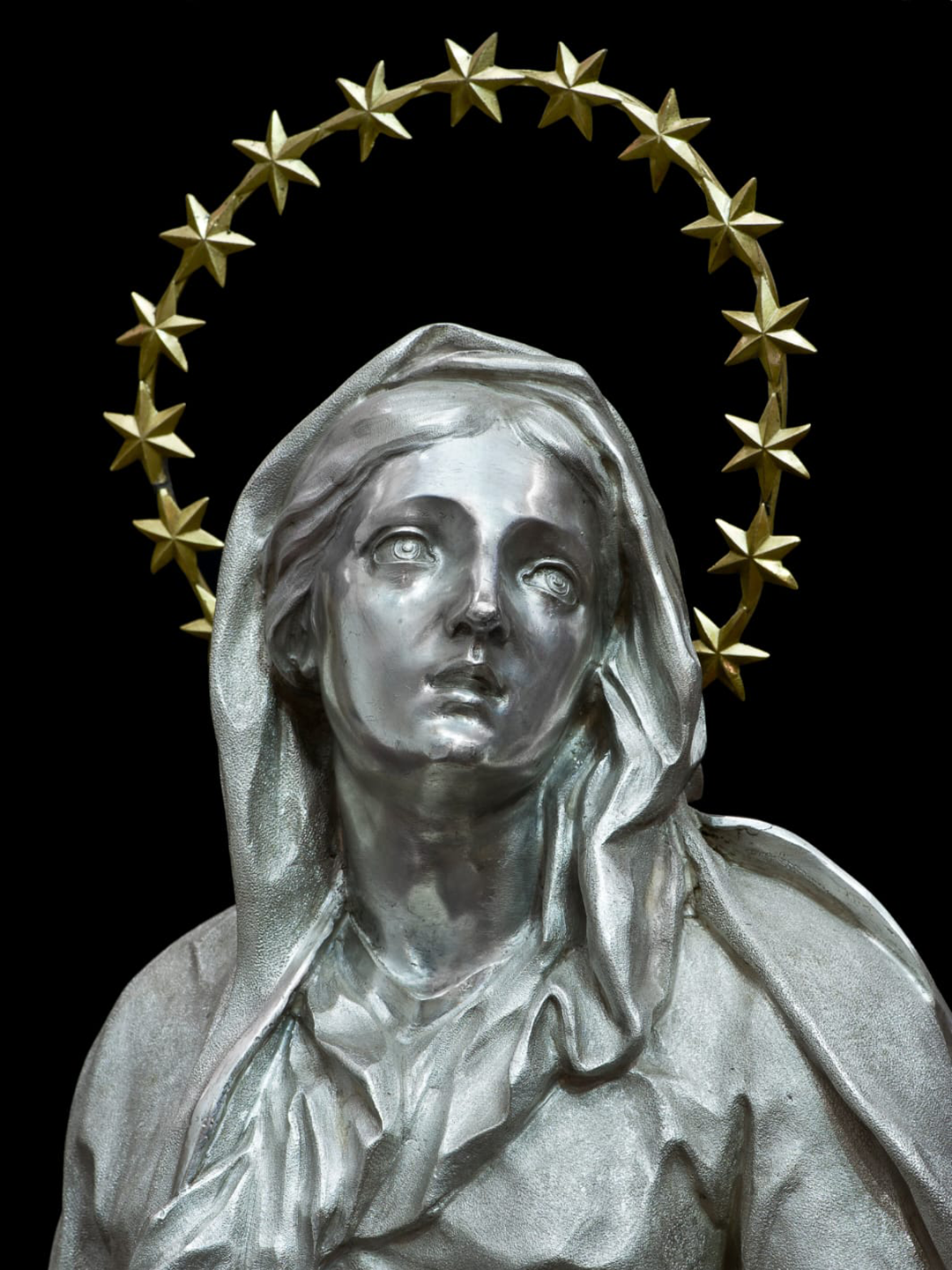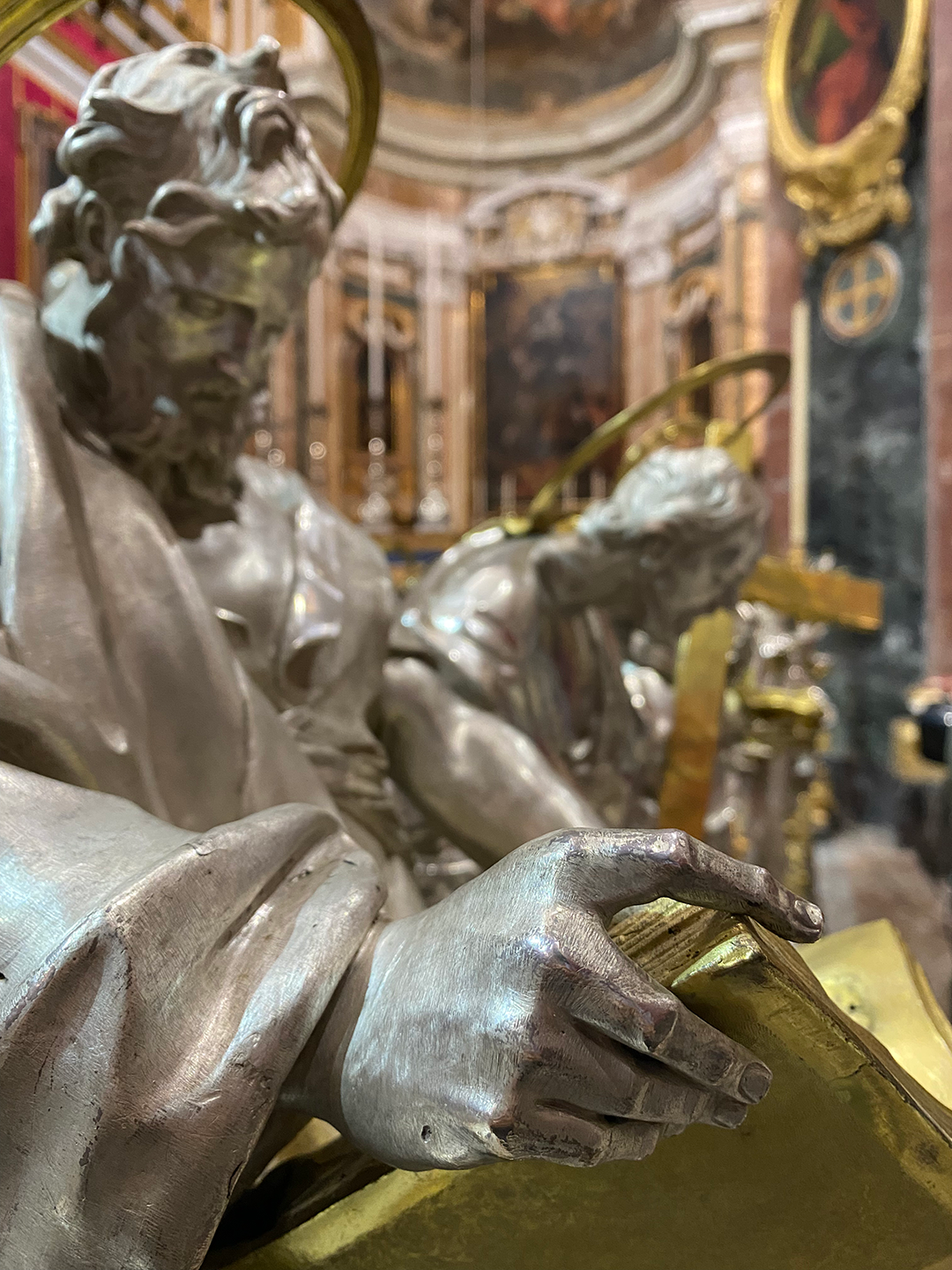A Collection of fifteen Silver Statues dating back from 1741 and 1743, made by the Roman silversmith Antonio Arrighi can be found within the first hall of the museum known also as the apostolato. The statues, showing the apostles, John the Baptist, St. Paul and Our Lady, were commissioned by the Order of St John to embellish the main altar of the St John’s conventual church in Valletta during the titular feast. The design of the statues is based on the marble statues in San Giovanni Laterano in Rome,
During their brief stay on the island between 1798 and 1800, the French cleared out several churches of their silverware to mint coins to pay salaries to their troops. In 1798, when the statues were still at St. John’s conventual church, Canon Salvatore Susano informed the Cathedral Chapter about them and said it would be a great loss if they were to be melted down with the rest of the silver confiscated from that church by the French.


